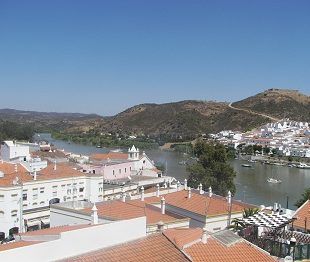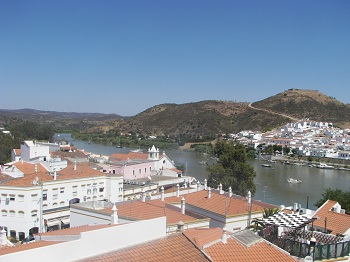
Exploring Portugal’s historical Spanish border areas
The lucid water of the river Guadiana forms a natural border which divides Portugal from Spain. Nearly identical in their elegant and dazzling white exterior, the villages of Alcoutim and Sanlucar de Guadiana sit face to face on opposing river banks, making it hard to believe that they belong to different countries.

Nestled upon the tranquil and verdurous river hillsides it is equally hard to believe that the Portuguese village of Alcoutim is just a short drive from the busy and bustling beaches of the Algarve. Or that the Spanish village of Sanlucar de Guadiana is just a stone’s throw from the popular holiday resorts of the Costa del Luz. The language and the Guadiana River, flanking countryside and scenery as pretty as its name, is all that separates these almost indistinguishable towns and two great nations.
It is approximately 40 kilometres north from Vila Real on the eastern edge of the Algarve where you will find the clusters of two whitewashed villages, sprinkled upon a backdrop of fertile grassland on opposite hillsides. There is no bridge to enable you to cross the Guadiana here, forcing you to have to travel 25 kilometres south in order to cross the border. Alternatively a ferry that runs daily will take you across the water for just one euro.
It comes as little surprise that these two villages, strategically positioned opposite each other, defensively guarding their country, have an interesting and important history. Alcoutim has a long history as a river port, dominated by Arabs, Romans and Greeks. The castle dates back to the fourteenth century and positioned high on the crest of the town, is worth a visit if not only to take in the magnificent views of the Guadiana River. Similar to Alcoutim, Sanlucar de Guadiana houses an impressive castle. The protective walls of the San Marcos Castle stand high on the hillside, honourably overlooking the village.
The villages of Alcoutim and Sanlucar de Guadiana, separated by the graceful flow of a great river, are an historical benchmark of both countries’ turbulent past and are most definitely worth a visit.


